Of all the countries in the world, China has the longest history. It is considered to be among four of the world’s most ancient civilizations. A civilization that dates back to 3,500 years ago. The Chinese culture is considered to have surpassed all other cultures in philosophy and art, given its many great creative periods. In as much as most countries believe that their culture was mostly influenced by the Europeans, there have been certain aspects borrowed from the Chinese. Some of them include porcelain, paper, silk, tea, and gunpowder.
The highlights of Chinese history are the dynasties that existed from ancient China to the republic that is known today. In this post, we’ve outlined the basics of the different dynasties, including the first and last dynasties to have existed as well as the longest to have reigned. We will also cover the beginning and end of Ancient China and the timeline of the dynasties found within that time.
How Long Is Chinese History?
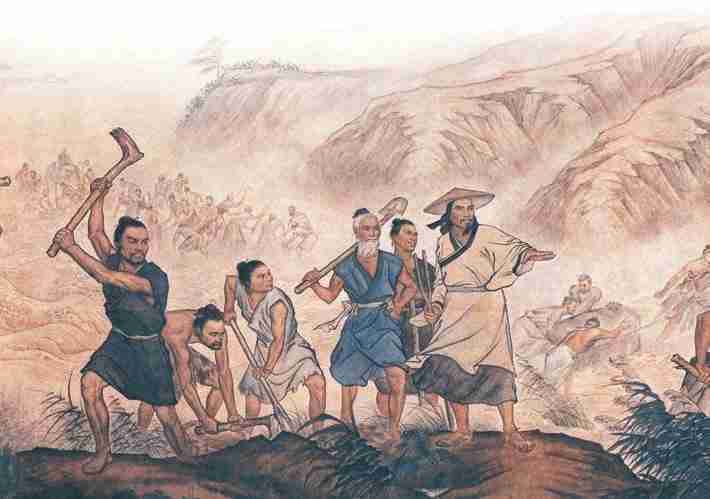
As mentioned before, Chinese history is as long as 3,500 years. The best way to understand this history is to break it down into the five notable stages/periods in the timeline of Chinese history. The five periods include the pre-historic period, ancient China, imperial China, the republic period, and modern China.
Although it’s not clear when the prehistoric period dates back to, it did cease in 1600BC. Most of what is known about that period are based on legends passed down to generations and little prehistoric evidence. Prehistoric China is divided into Paleolithic, Neolithic, and Bronze ages. There isn’t much proof of whether any dynasties existed in the early ages of this period. The Xia dynasty, therefore, which existed in the Early Bronze Age is considered to be the first dynasty, consisting of several clans along the Yellow River from 2070-1600BC. Although, there isn’t any evidence that conclusively proofs its existence.
Beginning from where the Bronze age reached its peak, was the start of Ancient China. It was believed to be the beginning of Chinese civilization. During this time, Daoism and Confucianism, the two traditional Chinese philosophies were developed. China also expanded in population and territory. The end of this period was marked by the breaking of China into warring kingdoms, which lasted for about 200 years.
When China was reunified after that it gave rise to the period of Imperial China. This period consisted of the majority of the dynasties noted in Chinese history. The Qin dynasty and Han dynasty were the first dynasties to exist in this period. Qin dynasty (221-206 BC), despite being the shortest, was the first, which reunited China and placed it under the rule of a single emperor. It established a bureaucratic government that was later picked up by the Han dynasty (206 BC-220AD). Together these two are responsible for laying the foundation of the political system used in China in today’s day and age.
After the two dynasties, Imperial China can be broken into two periods. To start with was what was called the Dark Ages of China. This was a messy time whose beginning was marked by the defeat of the Han dynasty when China again broke into what was called the Three Kingdom period which lasted from (221-265 AD). Until the Jin dynasty came into rule between (265-420 AD) and brought together most of China, only for it to be divided again into the Northern and Southern dynasties that reigned from (420-581 AD). During this confusing time, many religions were developed with Buddhism being the most popular among the barbarians of the Northern Kingdoms in China.
In 581AD, when the Sui dynasty came into reign and managed to reunify China once again, it gave rise to the second period of Imperial China, the medieval period (581-1368 AD). These were the Middle Ages of China’s civilization where it experienced steady growth and became a culturally sophisticated nation that was technologically developed. The dynasties that reigned in this era were the Sui dynasty (581-618 AD), Tang dynasty (618-907 AD), and Song dynasty (960-1297 AD). It was in this era that the four greatest inventions of the Chinese were created and further developed, they included the compass, printing, paper, and gunpowder.
Imperial China’s golden, came to a halt with the rise and fall of the Mongol rule, during the reign of the Yuan dynasty (1279-1368 AD). Around this time, with the steady growth of Mongolian rule, China was first introduced to foreign countries. By the time the Ming dynasty (1368-1644 AD) came into power, the imperial social structure was no longer adequate for the age of colonization and exploration that was happening in China. Qing dynasty (1644-1912 AD) which followed was the last known imperial dynasty. Although the dynasty’s reign is started as the golden age of China’s prosperity, the last of the Qing dynasty’s reign and fall from power is remembered for its forced trade, which led to China being a semi-colonial and semi-imperial nation.
To end the reign of the Qing dynasty in 1911, was the rise of the fourth stage of Chinese history, the Republican Revolution that led to the Republic of the People of China. This was, however, not fully established across the whole of China given the many civil wars that occurred around that time and lasted for decades. It wasn’t until 1949 that China entered into an era of Communism that it experienced stability, and immense economic growth to become what it is today.
When Did Ancient China Start and End?
Ancient China was the first recorded period in Chinese history, and despite many people’s confusion, it is not similar to Imperial China. The difference between the two is, the warring kingdoms that marked the end of Ancient China and the beginning of Imperial China when the nation was unified once again.
As earlier mentioned, Ancient China is said to have started in 1600 BC just after the peak of the Bronze Age. It then came to an end in 221 BC when China broke apart following 200 years of warring kingdoms. Within this time, two dynasties existed in Ancient China, and they were Shang and Zhou dynasties.
Timeline Of Ancient Chinese Dynasties
Shang Dynasty
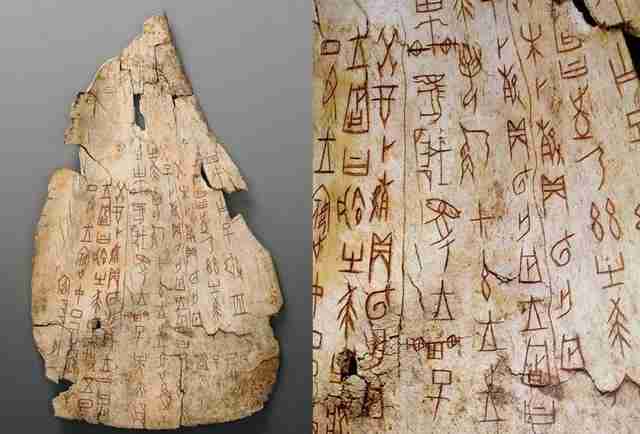
The dynasty was established in 1600 BC when the King Tang of the Shang tribe overthrew the last Xia dynasty emperor because he had become too greedy and oppressive. Under King Tang’s rule and many of the rulers that succeeded him, the Shang dynasty expanded its territories from the Yellow River basin and spread across the southern and central parts of China up until the sea to the east. This expansion took place over more than 1400 years of the dynasty’s reign.
As the second recognized dynasty of Chinese history, the Shang dynasty is the first known to have any kind of written records. Following the bronze age, many bronze objects and jade articles have been found, that support the early archeological record keeping. Shang dynasty is also known to have had the earliest known form of Chinese writing which was the oracle bone writing. This involved pictographic inscriptions on animal bones and turtle shells. Thousands of such inscriptions have been discovered but the majority of them are yet to be deciphered by archeologists today.
The Shang dynasty however came to an end in 1046BC in a similar manner as the Xia dynasty. The last ruler, King Shang Zhou was seen to have lost the Mandate of Heaven and was no longer seen as a fit ruler. As such the rulers of the neighboring Zhou tribe rebelled against him and tried to overthrow him.
Zhou Dynasty
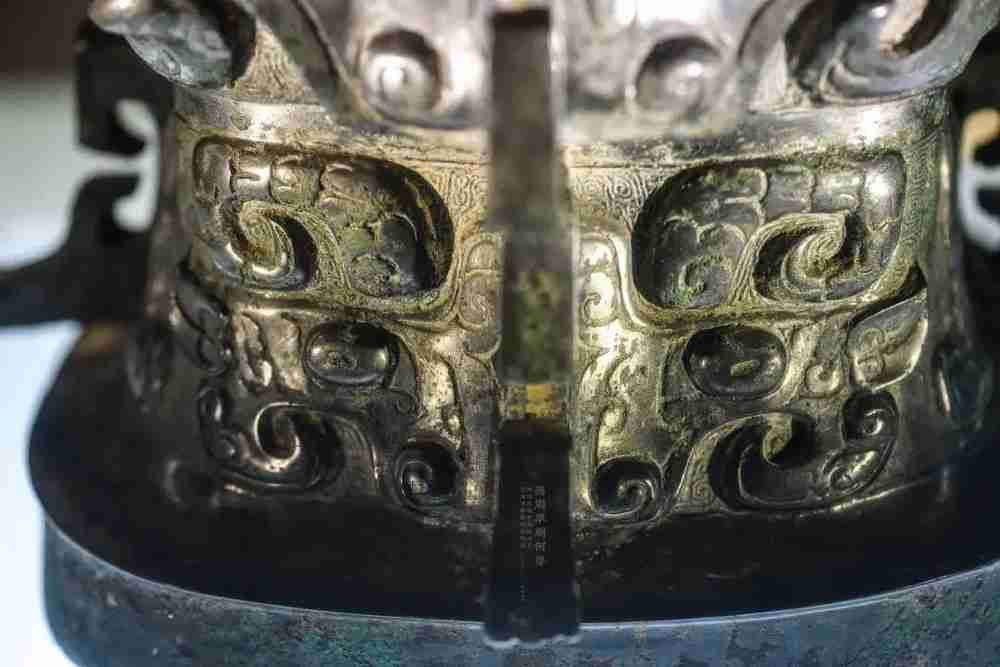
After successfully overthrowing the last emperor of the Shang dynasty, the Zhou dynasty was formed. Its large territory was divided into feudal states that were ruled over by kings. This marked China’s transition from being a tribal society to a feudal one. As such the king of Zhou only had little direct control and it was over a small portion of the territory. The Feudal states, however, paid tribute to him as the overall ruler.
The reign of the Zhou dynasty can be broken down into three periods. Beginning with the Western Zhou period, this was a peaceful time that lasted between 1046-770 BC, when the overall Zhou king lost his authority over the states. This led to the emergence of the seven prominent states that brought about the Spring and Autumn period that lasted between 771-476 BC. Around this period was the beginning of the end of the Zhou dynasty and Ancient China in general. The fall of the Zhou dynasty came about due to the implementation of the fengjian system, where the royals put relatives in charge of the seven states to strengthen their authority.
This brought about the last period which was the Warring States Period which lasted from 475-221BC. This was the era of the division of China that would mark the end of Ancient China when the Qin dynasty reunified the nation giving rise to a new era of Imperial China.
How Many Chinese Dynasties Were There in Total?
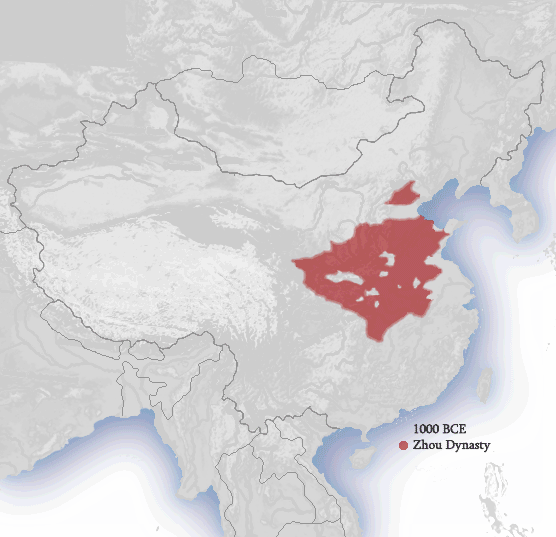
Throughout the history of China, there are over 12 notable dynasties that existed within 3,500 years. Of these dynasties, some were subdivided into minor ones. The table below breaks down the different dynasties that existed according to Chinese history in chronological order.
list of chinese dynasties timeline
| Historic Period | Age | Dynasties | Time | |
| Pre-historic era | Early Bronze Age | Xia Dynasty | 2070-1600 BC | |
| Ancient China | Shang Dynasty | 1600-1046 BC | ||
| Zhou Dynasty | Western Zhou Period | 1046-770 BC | ||
| Spring & Autumn Period | 771-476 BC | |||
| Warring States Period | 475-221BC | |||
| Imperial China | Initial Age | Qin Dynasty | 221-206 BC | |
| Han Dynasty | Western Han Dynasty | 206 BC-25AD | ||
| Eastern Han Dynasty | 25-220AD | |||
| Dark Ages | Six dynasties | Three Kingdoms period | 220-265AD | |
| Jin Dynasty | 265-317AD | |||
| Northern and Southern Dynasties | 317-589AD | |||
| Medieval Age | Sui Dynasty | 581-618AD | ||
| Tang Dynasty | 618-906AD | |||
| Five Dynasties | Later Liang | 907-923AD | ||
| Later Tang | 923-935AD | |||
| Later Jin | 936-947AD | |||
| Later Han | 947-951AD | |||
| Later Zhou | 951-960AD | |||
| Song Dynasty | North Song | 960-1127AD | ||
| South Song | 1127-1279AD | |||
| Mongol Ruling Age | Yuan Dynasty | 1279-1368AD | ||
| Renaissance Age | Ming Dynasty | 1368-1644AD | ||
| Qing Dynasty | 1644-1911AD |
Which Chinese Dynasty Lasted the Longest?
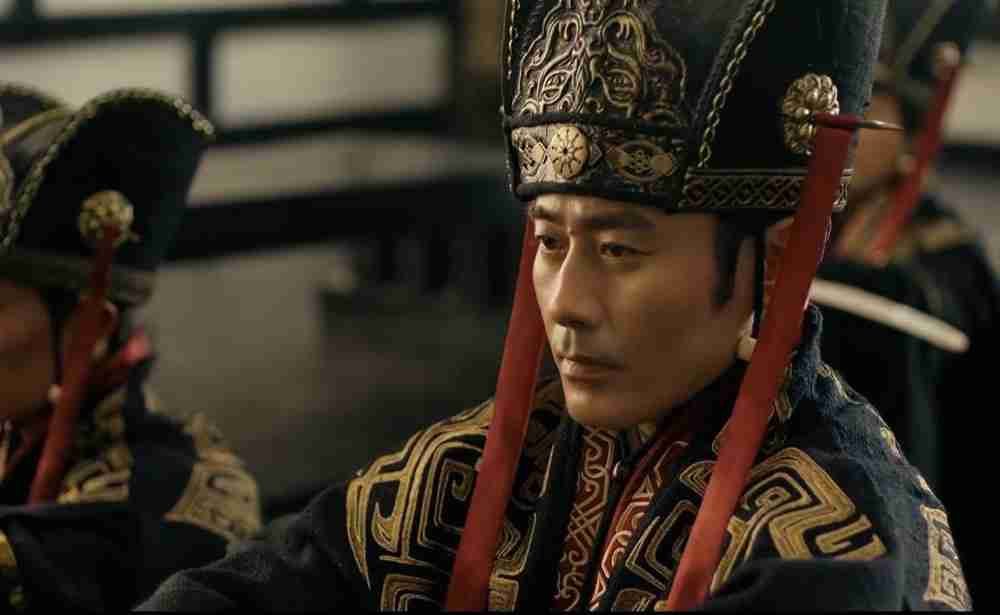
Of all the dynasties to have ruled over China, the one with the longest reign was the Zhou dynasty. Aside from being the third recognized dynasty after Xia and Shang dynasty, its rule lasted for almost 8 centuries.
During its reign, China experienced a wide spread of civilization, and its culture has begun to flourish. The dynasty is noted for its significant cultural contribution to the military organizations, agricultural systems, social stratification, and religious and political innovation in the country. They were the ones who developed The Mandate of Heaven, which was a concept used to justify one’s rule as the King, based on the belief that he was blessed by the gods. This was actually the reason, the first Zhou king rebelled and overthrew the last King of the Shang dynasty.
Aside from that, it has also greatly influenced education with its contribution to Chinese literature, music, and philosophy. Its reign is actually considered the period of the birth of Chinese philosophy, given the several schools of thought that came up within that time. They included Confucianism, Mohism, and Taoism. Many of the notable philosophers and poets like Tao Chien, Lao-Tzu, Mencius, and Mo Ti, were born during the Zhou dynasty.
Its collapse came about with the Warring States period, where the feudal states were at war with each other in an attempt to establish themselves as independent entities. This marked the end of the dynasty and the Ancient China period in Chinese history.
What Was the Earliest Chinese Dynasty?
Shang is considered to be the first recognized traditional dynasty in China. That is only because it was the first dynasty with recorded proof of existence in Chinese history. Before it, there was the Xia dynasty, which is, in fact, the earliest known dynasty, only there wasn’t much from its reign that was recorded or preserved to prove its existence. There are only legends that are linked to the beginning of the Shang dynasty.
Although what is known of the Xia dynasty is mostly legendary, it has been referenced in classics texts like the Bamboo Annals and Records of the Grand Historian. According to the legends and references, the dynasty’s reign begun sometime in 2070BC and lasted up to 1600BC. It was established by Yu the great when Shun the last of the Five Emperors handed him the throne. The Five emperors were considered mythological and referred to as the Three Sovereigns and Five Emperors.
Before Yu, rulers were chosen based on their ability to lead. After him, however, the Xia dynasty adopted a hereditary system of governing, so he was succeeded by his son after his death. Yu is famed to have been the one to stop the flood by creating canals that redirected water back to the ocean. These canals are what were later used in the invention of irrigation that improved China’s agriculture.
The Xia dynasty is also said to have been the ones who came up with the Jade wear and the calendar system that utilized both solar and lunar movements. The worship of ancestors was also said to have been started during the Xia dynasty.
The majority of those who ruled the Xia dynasty was said to be good rulers, although they were others thought to be tyrants. The last king, who led to the end of the dynasty’s reign was considered to be corrupt, oppressive, and greedy, which is why King Tang of the Shang tribe fought to overthrow him and established the Shang dynasty in 1600BC.
What Was the Last Ancient Chinese Dynasty?
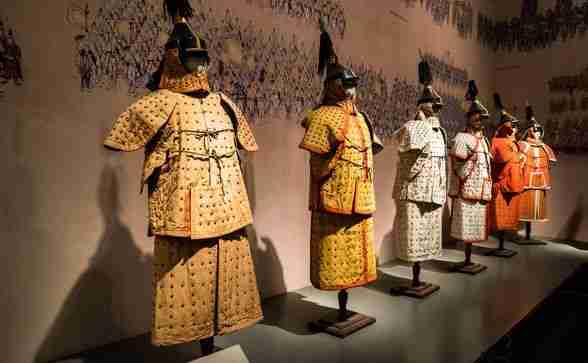
Immediately before the Republic of the People of China came to be, the last reigning traditional and imperial dynasty in China was the Qing dynasty. It is considered to have been the 5th largest empire in the entire world’s history. The empire was mainly made up of Manchu of Manchuria from the northern regions of China.
The majority of the Qing dynasty’s reign was characterized by military weakness, unrest, and aggressive foreign political powers. They had to fight with many countries including Russia, Germany, Britain, and Japan. The highlight was the Opium war that happened between 1839-1842 and again in 1856-1860, where it ended China’s humiliating defeat to Britain. The dynasty’s reign finally came to an end with the abdication of the last Qing emperor. This was the end of Imperial China and the beginning of the republic’s rule.
Conclusion
The dynasties of China are the biggest highlights of Chinese history. They show the development of China to what it has come to be today. Learning about the different dynasties is perhaps the easiest way to learn about Chinese history. Also, the biggest advantage of having had the longest history of civilization, is even a poor Chinese will seem to have the instincts of a civilized man. Simply by learning about the history through the legends despite not being educated, the Chinese learn about personal dignity and respect, both for self and others.
Thank you for the information about Chinese dynasties. Very insightful information. I also enjoy learning about Chinese history, culture and food.
Welcome to travel in China.